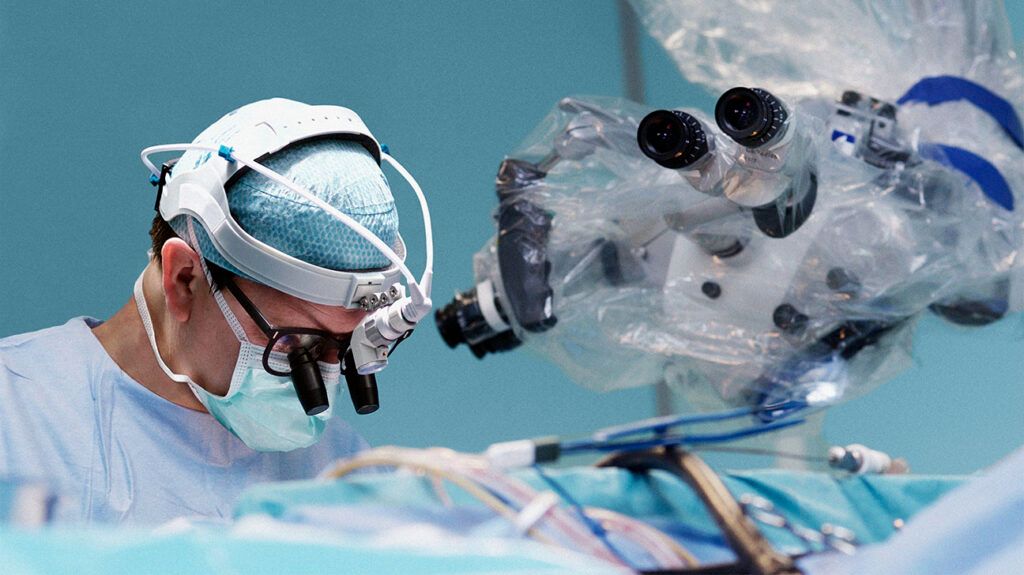A brain biopsy is a medical procedure that involves removing a tissue sample from the brain. Doctors use it for diagnostic purposes.
Doctors order brain biopsies to help them diagnose suspected brain cancer. The procedure is essential when noninvasive techniques, such as imaging, cannot provide a conclusive diagnosis for the suspected health issue.
Some biopsies are minimally invasive. They involve a needle and imaging guidance to target and collect tissue samples. Others require open access to the brain tissue through the skull.
This article covers brain biopsies, including the different types, the procedure, postprocedure care, and understanding the results.

Brain biopsies are
The cells of the sample can show if there is an abscess or tumor present and whether it is benign or cancerous. This information helps doctors recommend a treatment plan.
There are two primary types of brain biopsies:
- Stereotactic needle biopsy: This minimally invasive approach uses precise imaging guidance to target and collect a tissue sample from the brain. Doctors may prefer it for lesions that occur deep within the brain. Doctors
most often use this type of biopsy technique. - Open brain biopsy: In this procedure, a neurosurgeon creates a small opening in the skull to access the brain tissue directly. They may use it for more extensive tissue sampling or when the lesion’s location makes stereotactic biopsy challenging.
The preparation for the procedure may vary, but here are some typical steps:
- Review: The individual reviews the procedure with their neurosurgeon and can ask questions. They inform the neurosurgeon about any allergies, medicines they take, anesthesia reactions, and previous surgeries. The surgeon outlines the risks and benefits of the procedure and asks the person to sign a consent form.
- Medication: Unless the medical team says otherwise, people should take their medications as usual. If they take drugs to thin the blood, they may need to stop taking them, but the doctor will outline these details.
- Tests: Several days before the procedure, the individual’s doctor performs tests, such as electrocardiograms and blood work, to ensure the surgery is suitable.
- Fasting: The person usually needs to fast for a specific duration before the procedure, typically overnight, to ensure the stomach is empty. This minimizes the risk of complications.
- Transportation arrangements: People need to arrange transportation from the hospital or clinic after the procedure. The effects of anesthesia take some time to wear off, and it is better to avoid driving or taking public transportation immediately after the brain biopsy.
The following occurs during a brain biopsy:
- Anesthesia administration: This is where a person receives either local or general anesthesia. This helps ensure comfort and minimizes any discomfort or pain during the procedure.
- Stereotactic needle biopsy technique: Doctors use precise and advanced imaging techniques to guide a thin, hollow needle to the target area within the brain tissue.
- Open brain biopsy: Alternatively, for an open brain biopsy, a neurosurgeon temporarily removes a small section of the skull. This opening allows direct access to the brain tissue that requires examination.
- Tissue collection and analysis: The doctor carefully collects a brain tissue sample. The team then promptly sends the tissue sample to a laboratory for thorough analysis to determine if there are any neurological conditions or issues.
After a brain biopsy:
- Recovery: The team closely monitors the individual in the recovery area for a short time to check they recover fully from the procedure.
- Tests: After 4 hours, the person has a CT scan of the skull to check the status of the brain.
- Discharge: The individual may need to stay in the hospital overnight for observation, especially after an open brain biopsy. However, many people can leave for home after around 6 hours of observation.
- Medications: A brain biopsy is not very painful, but doctors can prescribe medications for pain and nausea if necessary. They may also provide steroids to prevent swelling and antiseizure medication to prevent seizures in the early recovery period.
- Eating and drinking: People can eat, drink, and mobilize as soon as they feel able to. This is typically within a few hours of the procedure.
After collecting the brain tissue sample, a pathologist conducts a thorough examination. The results provide detailed insights into the characteristics of the cells, including if they are benign or malignant, infectious, or inflammatory.
This information helps doctors shape treatment strategies and clinical decisions.
A brain biopsy is a diagnostic procedure doctors use to obtain brain tissue for examination. Most people have them as they are less invasive and involve a faster recovery. The other type of biopsy involves accessing the brain through a hole that doctors cut in the skull.
Both types of biopsy are safe procedures that provide doctors with critical information they cannot determine from imaging studies alone.
